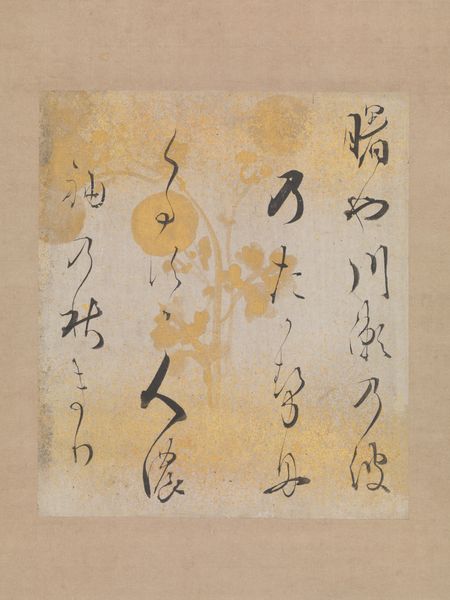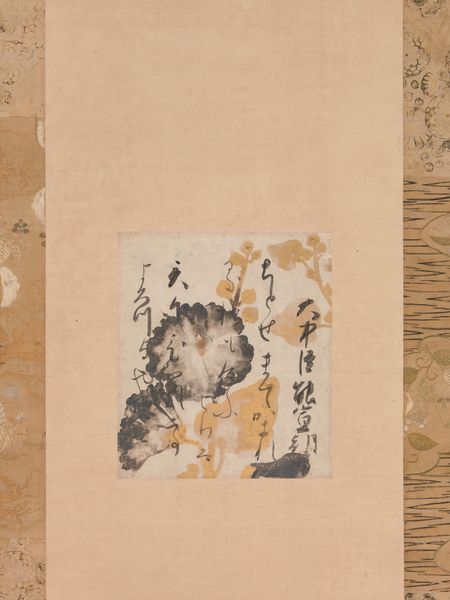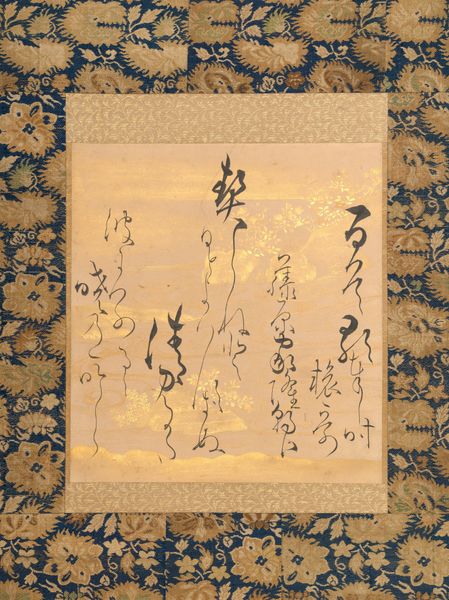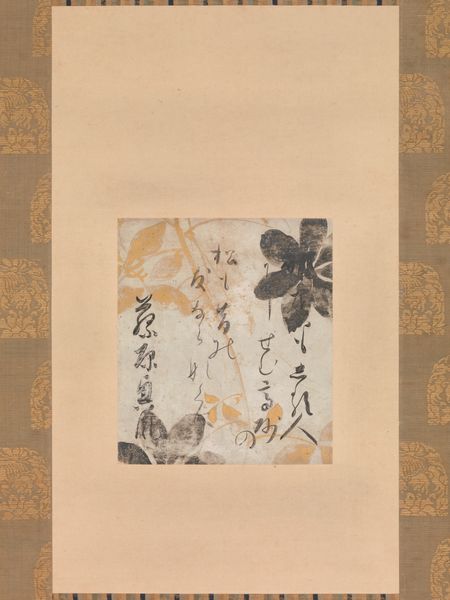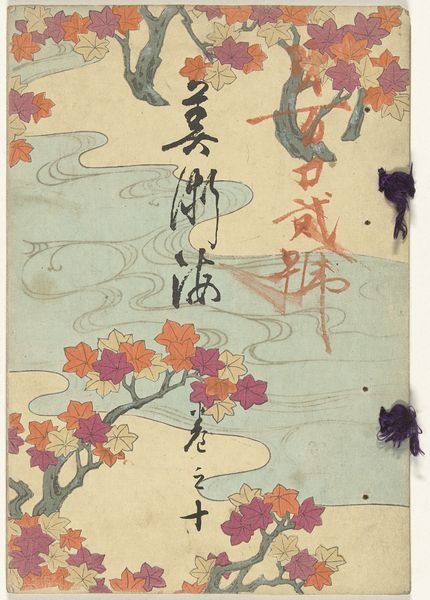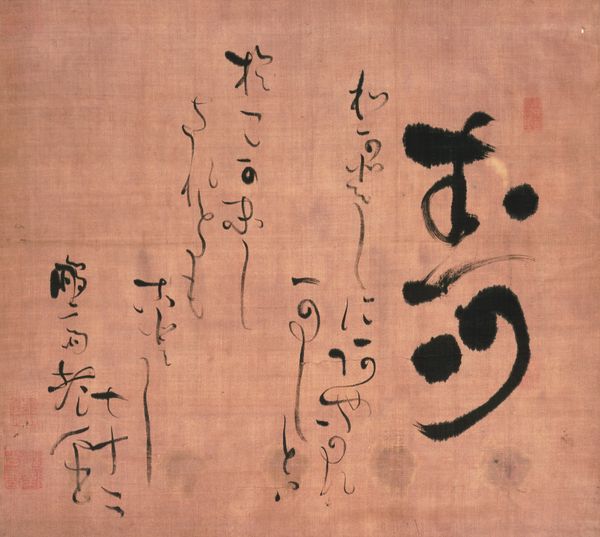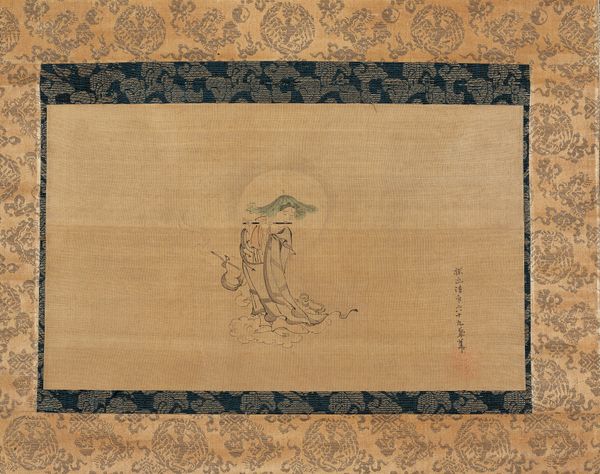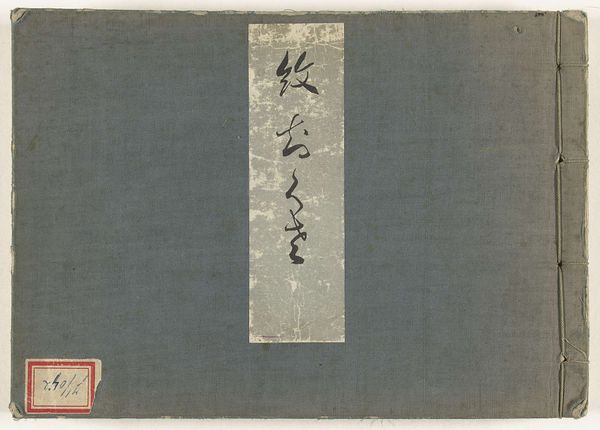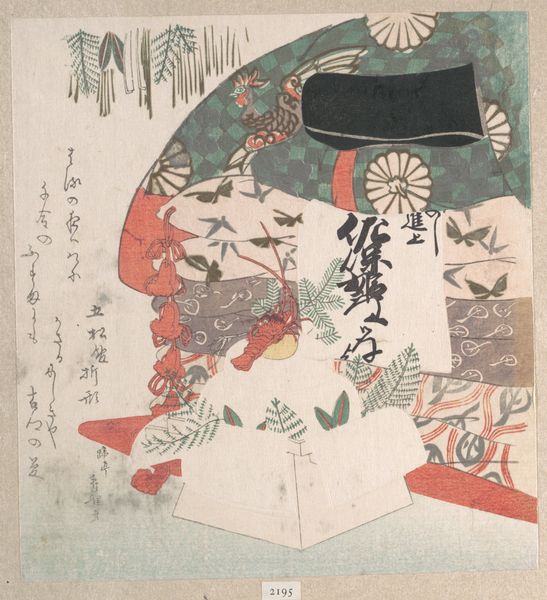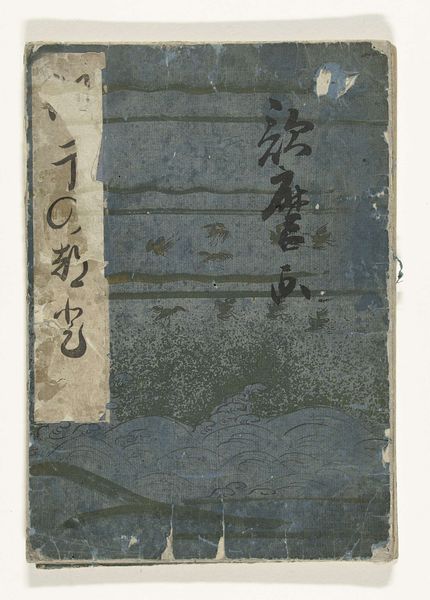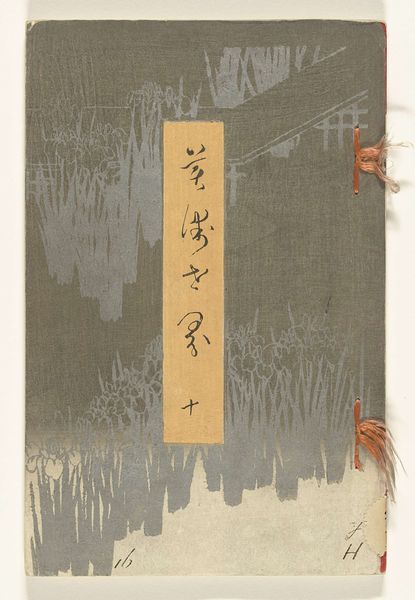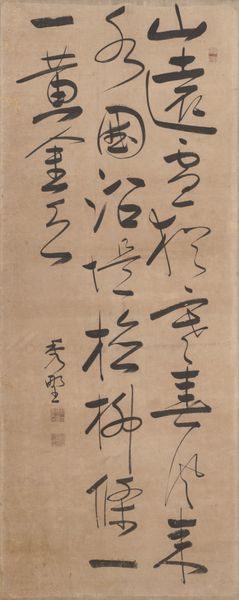
Poem by Kamo no Chōmei with Underpainting of Cherry Blossoms 1606
0:00
0:00
painting, paper, ink
#
painting
#
asian-art
#
landscape
#
paper
#
ink
#
watercolor
#
calligraphy
Dimensions: Overall: 7 15/16 x 7in. (20.2 x 17.8cm) Overall with mounting: 53 x 14 3/4 in. (134.6 x 37.5 cm) Overall with knobs: 53 x 16 1/2 in. (134.6 x 41.9 cm)
Copyright: Public Domain
Editor: This beautiful scroll, "Poem by Kamo no Chōmei with Underpainting of Cherry Blossoms" created by Hon'ami Kōetsu in 1606 uses ink and watercolor on paper. I’m struck by the contrast between the delicate blossoms and the strong, bold calligraphy. What's most significant about a piece like this? Curator: Its significance lies in the fusion of poetry, painting, and calligraphy – three arts deeply interwoven in Japanese cultural and intellectual life. The poem, penned by a famous recluse, already carried weight. Then, Kōetsu, a prominent cultural figure, layered his artistic interpretation onto it, enhancing its value and reach. This piece showcases how powerful social and cultural capital is expressed visually. Editor: So the value is really built-in, based on who made it and what it represents? Curator: Exactly. Think about the patrons of the time – they valued not just aesthetic skill, but the intellectual and social status conferred by owning such a work. Owning this displayed taste, education and alignment with specific cultural values. What about the composition strikes you most? Editor: I think it’s how the blossoms almost seem to frame the writing, but they also fade into the background. Was that intentional? Curator: Quite possibly. Consider that Kōetsu wasn’t simply illustrating the poem; he was offering a visual counterpoint, almost a commentary. The ephemeral nature of the blossoms echoes the themes of impermanence often found in Chōmei’s work, adding another layer for viewers attuned to those ideas. Editor: I guess art back then was a way of showing that you got the reference. Like, understanding the subtext was part of the whole experience. Curator: Precisely. The public role of art at that time served to legitimize the patron's status, not only of the artists and the patrons, but all the viewers who were allowed access to it. We learn as much about that time period as much from the artwork as the artwork does from that period. Editor: It is all interwoven. Thank you! It has been truly insightful.
Comments
No comments
Be the first to comment and join the conversation on the ultimate creative platform.
